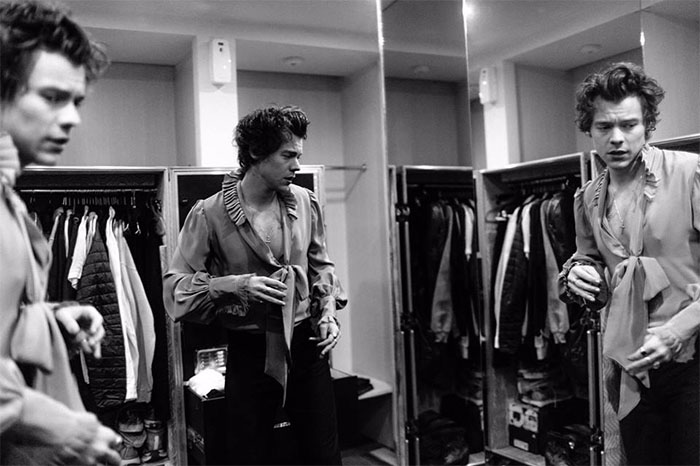Former One Direction member and now solo British singer Harry Styles earned praises from fans when he was able to properly pronounce two Filipino phrases at his May 1 concert.
He greeted fans by saying “Mabuhay, Manila!” and “Magandang gabi, Pilipinas!” which drove fans wild because of his proper articulation of the phrases badly mimicked by foreigners.
HARRY HAS LIKE THE STRAIGHTEST TONGUE OUT OF ALL THE FOREIGN ARTISTS THAT EVER SAID A FILIPINO PHRASE !!! pic.twitter.com/aWX93b9djJ #MahalKaNaminHarryStyles #HarryStylesAtMOAArena#HarryStylesLiveOnTourManila
— den is hugging niall in (39) !! (@glittertide) May 1, 2018
Styles is not the only one to have impressed Filipinos on speaking the language.
Meghan Markle, Prince Harry’s fiancée, also impressed Filipinos when she uttered “Salamat po!” to a Filipina fan during her visit in Scotland.
Meghan speaking in Filipino..
How can a woman be so sweet and perfect? ♥? pic.twitter.com/DJxFGpPN41
— Bella ???? (@izabellafr) February 20, 2018
The stars of a famous Korean reality show, “Real Men,” also showed their Filipino speaking skills when they filmed in the country.
Filipino language in the eyes of foreigners
According to a UK-born businessman named Phil Smithson, learning Filipino is “fun.”
He is an expat who created a management consulting company in the Philippines, On-Off Group.
He wrote on LinkedIn, “I’ve had a fun eight years in the country and one of the main reasons for that is because I made an effort to learn the language.”
Smithson’s fascination with the Filipino language enabled him to create another company called Learn Tagalog Fast. Its goal is to teach foreigners how to speak conversational Filipino within the country.
In an interview, he noted that his company adopts a “conversation first” way of teaching than a “grammar first” method. It was how Smithson learned Filipino in the first place.
He said, “I didn’t learn Tagalog from a boring grammar book. I learned it from using it and speaking it with other people. So that’s what we’re teaching here.”
“If we give them page one of a grammar book, they’ll be like, ‘Man, Tagalog sucks.’ But with Taglish, they’ll be like, ‘Wow, Tagalog’s so powerful,'” he continued.
There are students of Smithson’s program who has shared their thoughts on learning Filipino.
David B. said, “I really enjoyed the course. Not sure what I was expecting, but it was definitely fun. I liked the fact that the course was very interactive and focused more on conversation/speech rather than structure/grammar.”
Pauline B. added, “Right from the start, we learned the words and sentences that we could actually use in everyday conversation. We also asked the meaning of words we hear every day and used them too!”
Smithson revealed how he teaches foreigners. “We teach them two words: mag and tayo.”
“And then we tell them that in the middle of those two words, you can put almost any English word you want and it’ll make sense. It’s a little trick to build their confidence like crazy and get them speaking Tagalog. And they love it.”
His company has taught over 50 foreigners to speak in Filipino since 2016.
Filipino’d
The concept of foreigners speaking Filipino appear to fascinate people. YouTube has seen its fair share of non-locals speaking the language with high viewership.
Some of them are Dwaine Woolley, Travis Kraft and Jack.
Dwaine Woolley, an Australian, is fluent in Filipino, Visaya and Waray-Waray. He started out as a missionary in the Philippines and eventually learned to love its language.
Travis Kraft, a famous American vlogger in Asia, describes himself as an “expert on Philippine tourism.” He is based in Los Angeles but often works in the Philippines.
Jack, an ordinary American, gained online fame when his Filipino friend shared a video of him speaking the country’s language in a polished accent.
It is evident that the Filipino language continues to enthrall non-locals.
As Smithson stated, “If you can speak Tagalog, there’s this whole other level of fun to be had in the Philippines and a much deeper level of cultural understanding to be gained from it.”

